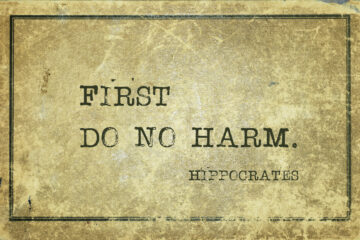As we look to improve our life with New Year resolutions, it’s important that we understand that positive change must start with positive decisions. There are only three choices to every decision we make. Not hundreds, not a dozen; just three and they are very easy to remember. We can decide to select the Right choice, the Wrong choice or an Acceptable Concession. For this discussion, we will explore the third and most selected choice, the acceptable concession.
The first question is usually, “Why is it the most widely selected choice”? Followed by, “Wouldn’t we want to make the right choice most of the time?”
It’s true that the majority of the time we choose the acceptable concession but not because it is the most popular choice to make. The facts tell us that everyone instinctively knows right from wrong, so rationally, one would think that people would choose to a solve a problem with the best and right solution more often than not. That hypothesis would be true if we solved our problems solely on the three sources of trusted knowledge; our education, experiences and the natural instincts of ethical / moral conduct. The fact is our emotions and desires are primarily selfish in nature and they override our intelligence more than we care to admit. I know I should eat healthier food but psychologically and physiologically I enjoy the taste of a juicy burger and fries.
Every eternal truth remains constant and cannot be altered by mankind’s three fuels of emotion; our thoughts, reasons or ideals. Even the building blocks that control the flow of the truth, in and of itself, has a universal law. The law states, that the truth always comes first and is always the right solution, the outcomes of the solution will follow and our emotional response is third. Our final decision will be predicated on how we receive, handle, and accept the conceived outcomes and the emotions they will bring. We, as a people, have lost sight of the fact that the truth is never changed by our emotions. This is why it takes brave people to share and live the truth but that courage must be driven by a solid conviction to insure against propagandizing the lies that fight for our own emotional attention.
Remember, this conflict has been going on for eons; none of this is new. The great philosophers are the ones who first identified the laws explaining these truths. Here are just a few of them.
Aristotle explained this natural law called, “The Law of Excluded Middle; for every proposition, either it’s positive or negative. Everything must either be or not be.” This means that a truth can never be true as well as false at the same time. There really is no gray area; although our acceptable concessions are chosen as “our” truth in many decisions. We negotiate with our self, weighing the amount of temporary pleasure and forthcoming pain the wrong choice brings against the long-term satisfaction the right answer will deliver. Ultimately, we settle for something in the middle.
The Law of Cause and Effect (Natural Law); the basis of Buddhism states:
Every effect has a cause and a condition.
When a cause and a condition combine an effect occurs.
All effects have a cause. All effects have a condition. There are no exceptions.
You do (Cause) a good deed (Condition); good things happen (Effect).
We have been taught these lessons as children since the beginning of time, so why are we allowing the emotions of others to silence our voices of reason?
There will always be bad reasons for good ideas and good reasons for bad ideas. This is the primary reason why moral, well-meaning people struggle to find common ground on ideological differences. It is also the reason many New Year resolutions are not met.
If this is my last post, I want all to know there was only one purpose for all that I have written; to have made a positive difference in the lives of others.
Anthony “Tony” Boquet, the author of “The Bloodline of Wisdom, The Awakening of a Modern Solutionary”













